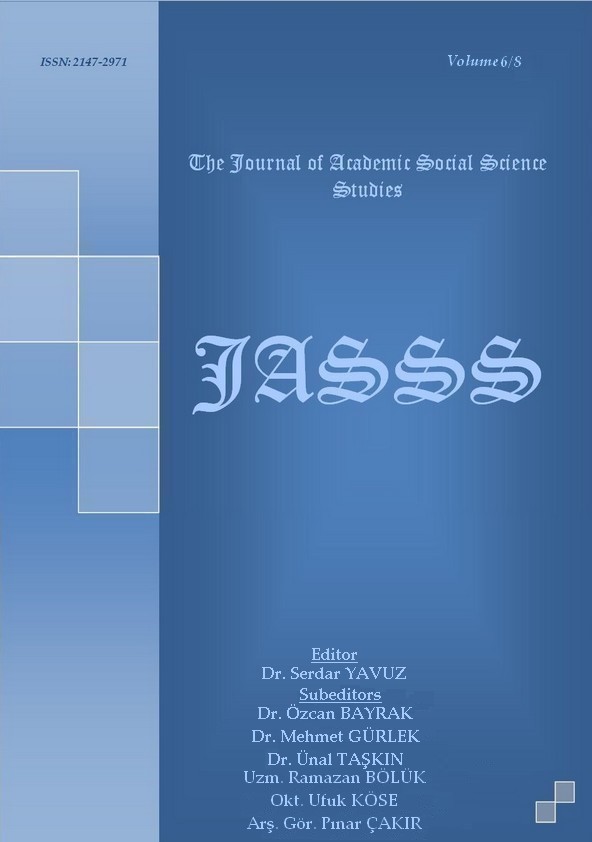Author :
Abstract
Eyyubiler döneminden itibaren ticaret hayatı canlanmaya başlayan Halep’in, Osmanlı hâkimiyetine girmesiyle bu önemi daha da artmış ve Doğu Akdeniz’de önemli bir ticaret kenti durumuna gelmiştir. Bu gelişme, Asya mallarını Avrupa’ya taşıyan Batılı tüccarların ticari faaliyetlerini Şam’dan Halep’e kaydırmalarına neden olmuştur. Halep’in tam anlamıyla devletin bir eyaleti olmasını güvence altına alan Osmanlı valileri, kenti ve onun ticari kapasitesini, hem bu dünya, hem de öteki dünya açısından iyi bir yatırım alanı olarak gördüler. Osmanlı yönetimi altındaki ilk yıllar boyunca kente gelen valiler, şehrin görüntüsüne ve ticari altyapısına büyük katkılarda bulundular. Bu faaliyetlerin doğal sonucu olarak Osmanlı idaresi altında geçen ilk yarım yüzyıldaki yapılaşmanın, Halep’in ticari çekirdeğini iki kattan fazla büyümüştür. Bir yandan Anadolu’yu Suriye’ye bağlayan yol üzerinde, diğer taraftan da Baharat yolu üzerinde bulunan Halep’in tarih boyunca hareketli bir ticari yaşamı vardı. Halep’te Kapalıçarşı ve hanların en güzel örneklerini görmek mümkündür. Kenti ziyaret eden herkes Halep Çarşısı karşısında şaşkınlık ve hayranlık duyuyor, onu sadece İstanbul’un ünlü Kapalı Çarşı’sının geçebileceği düşünüyordu Hanların boyutları çok değişkendi ama en geniş hanlar, kuşkusuz Halep’te bulunmaktaydı. Çalışmada, Halep’e yaklaşık 400 yıl kadar egemen olan Osmanlı Devleti’nin Halep’in ticari önemine verdiği değer, yatırımlar ve bu doğrultuda yapmış olduğu imar faaliyetleri hakkında bilgi vererek, döneme damgasını vuran önemli ticaret yapıları ve bunların Halep’in ekonomik hayatına yaptıkları katkılar ele alınacaktır.
Keywords
Abstract
The importance of Aleppo, whose commercial being experienced revitalization starting with the Ayyubid period, increased even more with its coming under Ottoman rule, and the city became an important center of trade in the Eastern Mediterranean. This development led Western merchants transporting Asian goods to Europe to shift their commercial activities from Damascus to Aleppo. Ottoman governors, who ensured that Aleppo fully became an imperial province, considered the city and its commercial capacity as a good investment for both this world and the next. Governors who administered the city during the initial years of the Ottoman rule made significant contributions to its appearance and commercial infrastructure. As a natural consequence of these activities, development in Aleppo during the first half-century of Ottoman rule more than doubled the size of the city’s commercial core. Occupying the road connecting Anatolia to Syria, as well as being on the Spice Route, Aleppo had an active commercial life throughout its history. At Aleppo, it is possible to come across the Covered Market and the finest examples of caravanserais. All who visited the city were stunned by the Aleppo Bazaar and admired its beauty, feeling that only the Grand Bazaar in Istanbul could possibly surpass it. The sizes of the caravanserais varied considerably, but the largest were, without a doubt, found in Aleppo. The objective of this study is to discuss the important commercial buildings that have marked the period, as well as their contributions to the economic life of Aleppo, by providing information on the value accorded to the economical significance of Aleppo by the Ottoman State, which ruled the city for nearly 400 years, as well as the construction activities it conducted with respect to the economic importance of the city.





